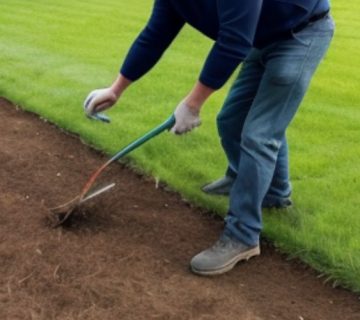- Examine plants carefully before buying
The simplest approach to keep disease out of your garden is to avoid it altogether. Getting a sickness from a new plant is not something any of us wants to happen.
Reading a few books, periodicals, and catalogues that demonstrate what a healthy specimen looks like is an excellent idea. Take home a plant with dead areas, rotten stems, or insects in general.
Always assess the root quality in addition to the crowns of the plants. Customers in a garden center are unlikely to do this, but it should be standard procedure. Place the plant stem between your fingers and place your hand on the dirt surface. Shake the plant loose by gently inverting the pot. To release the roots from the pot, you may need to tap the pot’s edge against a firm surface. Roots should be strong, white, and evenly scattered throughout the root-ball. Roots that are dark or mushy are not a good sign. Even if the tops appear to be healthy, a rotten root system will eventually kill a plant.
- Use fully composted yard waste
In a compost pile, not all items decay at the same rate. Some materials have decayed to the point where they can be used in the garden, while others have not. Composting produces high temperatures for long periods of time, effectively killing any microorganisms in the material. Infected plant waste that hasn’t gone through this process will reintroduce illness to your garden. If you are unsure about the state of your compost pile, avoid utilising yard waste as mulch under sensitive plants and putting potentially contaminated material in it.
- Keep an eye on your insects
Plant damage from insects is far more than just cosmetic. Viruses and bacteria can only enter a plant through an opening, which is commonly provided by pest damage. Some insects operate as virus carriers, transporting viruses from one plant to the next. Thrips propagate the impatiens necrotic spot virus, which has become a severe concern for commercial growers in the last decade.
 Clean up in the fall
Clean up in the fall
Even if you live in a mild area, it is usually advisable to clean out the garden in the fall. This is both a disease deterrent and a fantastic technique to control diseases that are already present in your garden.
Diseases can survive on dead leaves and debris and attack newly emerging leaves in the spring. Iris leaf spot, daylily leaf streak, and rose black spot are just a few of the illnesses that can be greatly minimized by removing the dead leaves each fall. If you’re leaving stems and foliage up for winter interest, make sure to take them down before new growth begins in the spring.
- Apply the correct fertilizer
When fertilising plants, you must exercise caution since too much fertiliser will burn the roots, decreasing their ability to absorb water. As a result, drought, cold, and heat stress make the plants more vulnerable. Plants that are deficient in nutrients are smaller and more susceptible to leaf spots, but a stronger plant can resist illness. Another technique to stress a plant is to give it too much of a certain nutrient.
You may get precise information on nutrient levels in your soil by getting a soil test from your local extension agency. Without it, feeding your plants would almost certainly be a guessing game, resulting in too much of one nutrient or not enough of another. Plant disease-resistant varieties
Plant disease-resistant varieties
Plants that are disease-resistant will get sick from a specific ailment but will fight it off instead of succumbing to it. Some tomatoes, for example, are labelled as “VFN resistant,” indicating that they are resistant to the fungus Verticillium and Fusarium as well as nematodes.
You’ll be disappointed if you start hunting for these codes on flowers because disease resistance is rarely identified on plant tags. This isn’t to say that many flower cultivars aren’t disease resistant. Many rose growers offer disease-resistant plants, such as those resistant to powdery mildew and black spot.
Many plants’ best or most resistant types can be identified with the help of nursery personnel and fellow gardeners. Plants and cultivars resistant to specific diseases may be listed in reference books and catalogues.
- Prune damaged limbs at the right time
Late winter is the optimal time to prune trees and bushes rather than waiting until spring. Wounded limbs can become infected throughout the winter, allowing illness to establish during the dormant season. Pruning in the late winter keeps illness from spreading to new growth. Although late-winter storms can do more damage, it is still preferable to prune a damaged limb now rather than waiting until spring. Always make clean, quick-healing cuts with sharp tools, and always cut back to healthy, live tissue.


 Clean up in the fall
Clean up in the fall

